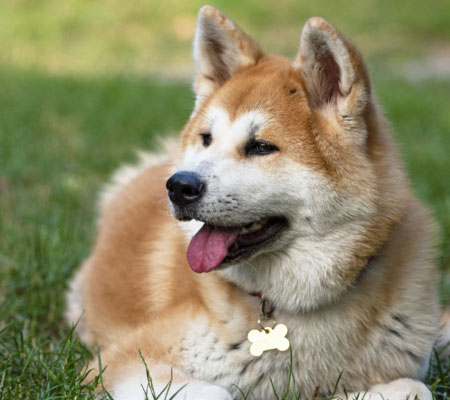The León Shepherd Dog, also known as the Carea
Leonés, is a herding dog that originated in the mediaeval Kingdom of León in
northwest Spain.
It is a working dog that has a wonderful
temperament for handling grazing flocks and herds. It is notable for its
intellect, strength, and psychological toughness, qualities that enable it to
perfect its talents over long and hard days with the herd, putting up with the
most extreme weather conditions on several times.
These canines are typically employed to work with
sheep, although they can adapt to any sort of livestock. They are also employed
to herd cows and mares in some areas. The Carea Leonés is a cow dog who is bold
and obstinate, attributes that earn the respect of animals and keep it under
control. The shepherds of León prized and favoured dogs with "a good
mouth" that would not hesitate to grab the cattle when necessary, a
quality that became ingrained in the León Shepherd Dog's bloodlines. All of
this becomes clearer when we consider the Spartan selection process to which
the shepherds subjected this breed.We can say with certainty that the Carea
Leonés is a dog whose morphology and personality have been shaped through time
by its surroundings, functionality, and human interaction (the shepherds).
Carea Leonés Highlights
Breed Size
Medium
Nature
Gentle, Friendly, Playful, Outgoing, Willful
Energy Level
Active
Intelligence
High
Barking Level
When Necessary
Coat Length
Short
Breed Group
Working
Droll Amount
Low
Good with
Familes, Children, Dog
Feed Level
Medium, High
Colour Type
Black, gray and white mixed, sometimes with tan markings.
Other Facts
Easy to groom, easy to train, easy for outside temprament, easy to kept at home.
Dog History
Without understanding the geographical, social,
and economic factors around the world of livestock that occurred in the nation,
and the impact of which shaped the evolution of the breed, we would not have
the dog we have today.
The precise date of the Carea Leonés' arrival in
flocks in León is unknown, although it most likely correlates with the
expulsion of the French and the restructuring of Spain in the early nineteenth
century. This resulted in the collapse of the Mesta Royal Council (1836) and
the gradual fall of transhumancia, or seasonal migration.
Three of the most significant "drove
routes" for merino sheep (Caadas Reales) started in the highlands of León,
which was a key element in the growth of livestock in this region and the León
Shepherd Dog. Many huge groups of animals belonging to the nobility and clergy
going between León and Extremadura had a considerable number of shepherds from
León, who were native to the highlands, on their staffs. Owners of migrating
flocks preferred to hire individuals from the highlands because they were more
familiar with the region and could withstand the harsh circumstances in the
mountains better than those from the south. Many of these shepherds opted to
start their own farms as transhumance began to diminish. These new herds began
to stay closer to home, in the provinces of León and Zamora, instead of
spending the winter in Extremadura. Transterminancia, or staying in a
territory, is the name given to the new grazing system. This method consists of
a little transhumancia that ran from the plain to the mountain for roughly 100
kilometres in a week or less.
The herds that travelled from León to Extremadura
did not have shepherd dogs, contrary to common perception. They were
unnecessary since the Mesta privileges offered Merino sheep flocks travel
privileges. For passing sheep, these rights led to the formation of Caadas
(extremely broad roadways along which the sheep strolled while feeding) and
cordeles (branches smaller than the Caadas). These flocks had no difficulties
with the grass since their owners owned wide swaths of land in Extremadura,
where the sheep could graze freely and pose no threat to crops or arable land.
The major owners rented exclusive pasturage for their animals as the flocks
moved up into the northern highlands.
As a result, we must conclude that the migration
had nothing to do with the Carea Leonés. In reality, the Mesta had enacted a
regulation prohibiting the presence of canines other than Mastiffs. The most
serious threats to the herd, both on the plains and in the mountains, were wolf
attacks and cattle thieves, and the Mastiff (Mastn Espaol, also known as Mastn
Leonés) was used to defend them.
18-22 inch 28-39 kg 10-13 year
Height

Weight

Life Span
Health and Care
- When it comes to the Carea Leonés, one of the
most important elements to consider is its nutrition. Its food must be of
excellent quality, balanced, and with the proper number of specialised
nutrients for its wear and tear, since it is a very energetic dog that must
conduct a lot of daily physical activity.
- Excess weight or malnutrition can only be avoided
if the calories are set ahead of time and monitored. This dog's portions will
have to be split if it becomes agitated during meals to avoid stomach torsion.
- If you decide to have a Carea Leonés, one of the
breed's most important care requirements is to plan ahead of time where it will
reside. As previously said, it necessitates an open location in which to
conduct several sports and workouts.
- As a result, it's unusual for this dog to live in
cities, where it's more difficult to provide it with all of the stimulation it
requires. Even yet, if this animal lives in the city from the time it is a
puppy and walks and runs for hours every day in wide places, it may become
accustomed to it.
- This dog is a tough creature who has grown
accustomed to living in a foreign land where genetic ailments aren't
acknowledged. However, because of its size and quick growth, it is susceptible
to disorders including hip and elbow dysplasia.
- These problems give the animal a lot of
discomfort and make it difficult for it to move, which may prohibit it from
carrying out its herding duties and lower its quality of life. In order to
identify these or other issues, regular checkups and veterinarian treatment are
required.
Dog Breed Care Tips and
Important Instructions
- The Carea Leonés is a great working dog, although
it is not normally a popular companion. Because of their emotional
characteristics, these animals aren't a good fit for households with children,
and they also don't perform well in homes with other pets or individuals who
live a sedentary lifestyle.
- This dog's owner must have great leadership
qualities, since this animal will obey you without question. If the caregiver
isn't sure, they may exhibit a variety of behaviours, however their shepherding
instincts will stay intact.
- Are you trying to figure out which dog would make
a suitable shepherd for your cattle? The Carea Leonés is an excellent choice.
You can enjoy their services and devotion for 12-14 years if you offer them
with the attention they require.
- The Carea Leonés, as a guardian, is extremely
faithful and obedient to the person it perceives to be its main guide. As a
result, it's critical that the same human gives it directions, invests time in
its education, and assists them in social situations.
- When the animal is a puppy, socialisation is essential
since the dog will be exposed to a variety of scenarios and spend time with a
variety of people and animals. Negative behaviours, such as fear or aggression
in the presence of strangers, will be avoided in the future.
- Carea Leonés are very clever and quick learners
by nature. Nonetheless, you should constantly provide the essential time to
their teaching, as well as positive reinforcement.
Carea Leonés Unique Name
| Male Name | Female Name |
|---|---|
| Bo | Alexis |
| Bruno | Chance |
| Brutus | Jenna |
| Bubba | Leia |
| Buster | Maggie |
| Charlie | Mattie |
| Gunner | Nellie |
| Murphy | Nola |
| Oakley | Pepper |
| Ollie | Rose |
| Pablo | Sally |
| Simba | Sandy |
| Willy | Snickers |
| Tex | Stella |
| Truffles | Abbie |
| Turner | Bridgett |
| Violet | Cameo |
| Waddles | Ladybug |
| Winnie | Tess |
| Yaka | Maple |





